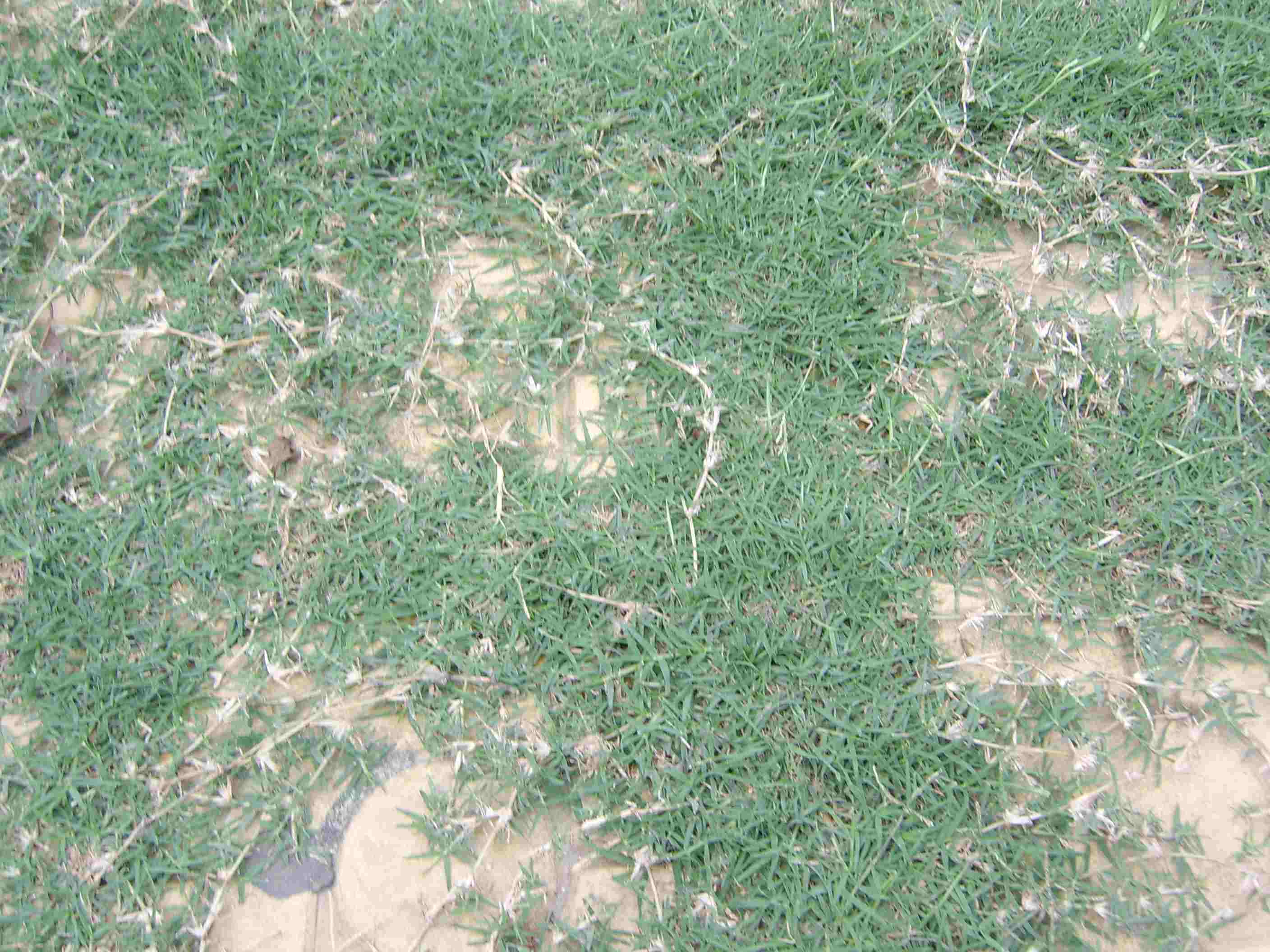Bermuda grass
Scientific name:
Cynodon dactylon
Synonyms: Bahamagrass, Common stargrass, Couch grass, Dhubgrass, Devilgrass
 Photo by Jewel Kinilitan-Bissdorf
Photo by Jewel Kinilitan-Bissdorf
Habitat
Cultivated and uncultivated areas
Affected crops
Most agricultural crops
Distribution
Asia, Africa, Europe, South America, USA
Description
The stem creeps at full-length along the ground. The leaves are small, linear and blue-green with rough margins. The undersides are smooth but hairy on the upper surfaces. The flowering stalks bear many slender and purplish
spikelets. The fruit is reddish-brown or orange-red. The seeds are flattened, oval and straw-colored.
The weed can be propagated through seeds, runners, rooting nodes, or underground rootstocks. It is mat forming. A single plant can produce up to 720 seeds. It can endure both extensive flooding and drought.
Effect and impact
The weed is an alternate host of some plant diseases such as brown spot, leaf spot, early blight, stripe disease of rice, barley yellow dwarf, lucerne dwarf, and of nematodes.
Bermuda grass is used as a cover crop to control erosion and for soil stabilization, feed for livestock, lawn beautification, and herbal medicine.
Methods of control
- Proper selection of seeds
- Thorough land preparation. Cultivation can destroy the seedlings
- Regular plant monitoring
- Hand weeding
- Mowing

